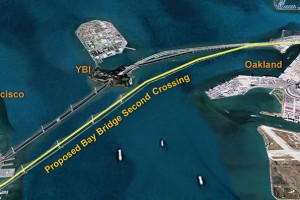An article in the August 2013 issue of Scientific American, “Learning in the Digital Age,” addresses the abilities of gaming technology ported over for educational use in Massively Online Open Courses (MOOC). Sugata Mitra, BBC news, noted that students in rural Africa can use Skype to get the best teachers. These stories address the availability of knowledge, not the presentation of knowledge for comprehension, speed of transfer, or integration, and are chained to the two-dimensional world. …
Review Category : Structural Forum
During my first NCSEA conference in 2011, I was inspired by the passion for the structural engineering profession displayed by my more senior peers. Throughout the conference, a major discussion topic was the need for structural licensure in addition to generic professional engineering licensure. As I listened to the arguments, I did not fully understand the reasoning either for or against structural licensure. …
In Part 1 of this article (July 2014), I examined the wind load provisions in ASCE 7-10 to illustrate how the ever-increasing complexity of code provisions has negatively impacted our profession. In this second and final installment, I would like to take a look at where we have been as a profession in recent decades, and perhaps extrapolate where we are heading if current trends continue. …
As an engineer, I believe that our highest obligation is to provide for the public welfare. Most jurisdictions and many professional societies express this obligation in their laws, rules or bylaws. In keeping with this, the NCSEA Structural Licensure Committee believes that the public would be better protected by establishing structural licensure in all jurisdictions – legislation requiring a licensed Structural Engineer to be in responsible charge for the design of significant structures. …
Part 1
In a recent Structural Forum column, A Remarkable Profession!, September 2013, Stan Caldwell pointed out some of the negative aspects of structural engineering that often prompt complaints from its practitioners. Those comments resonated with me and, I suspect, many of the more seasoned engineers who have witnessed significant changes in the profession over the past few decades. …
The British have tasked two organizations – CROSS (Confidential Reporting on Structural Safety) and SCOSS (The Standing Committee on Structural Safety) – to work jointly to collect information on structural failures, to maintain a database and to provide reports interpreting the data. When reading CROSS’ alerts and reports in its newsletters, I cannot help but reflect on the way we communicate risk within the United States, and question if our current practice is capable of providing adequate warnings about some potential structural risks. …
Unlike the students aspiring to enter many other professions, structural engineering students in most states are not permitted to take their licensing examinations immediately upon graduation. Rather, they must first serve an apprenticeship of three or four years. During this period, they typically have titles such as Engineer-In-Training (EIT), Engineering Intern, or Graduate Engineer. By state law, EITs are required to perform engineering work only under the direct supervision of licensed professional engineers. …
Structural engineering education today is a real mess! The problem starts with the young students who are traditionally attracted to our profession. Almost without exception, they like math and science much more than other subjects. Many, if not most, are more comfortable interacting with other people through their computers and mobile devices than doing so in person. This left-brained, somewhat introverted group is the raw material that feeds the pipeline year after year. Thus, the stereotype begins early. …
Structural Forum is intended to stimulate thoughtful dialogue and debate among structural engineers and other participants in the design and construction process. Any opinions expressed in Structural Forum are those of the author(s) and do not necessarily reflect the views of NCSEA, CASE, SEI, C3Ink, or the STRUCTURE® magazine Editorial Board.
All new structures are sustainable, according to the construction industry press. However, the truth is that no structures are sustainable under any definition of the word. …
Structural Forum is intended to stimulate thoughtful dialogue and debate among structural engineers and other participants in the design and construction process. Any opinions expressed in Structural Forum are those of the author(s) and do not necessarily reflect the views of NCSEA, CASE, SEI, C3Ink, or the STRUCTURE® magazine Editorial Board.
The Bay Bridge is one of the grandest engineering achievements in American history, as described in the Feature article this month. However, the recent renovation has not added a single lane to relieve traffic congestion, which has a negative impact on the Bay Area and California economies. There is one obvious solution for the problem – to build a second crossing between San Francisco and Oakland on an alignment approximately parallel to the original bridge. …


